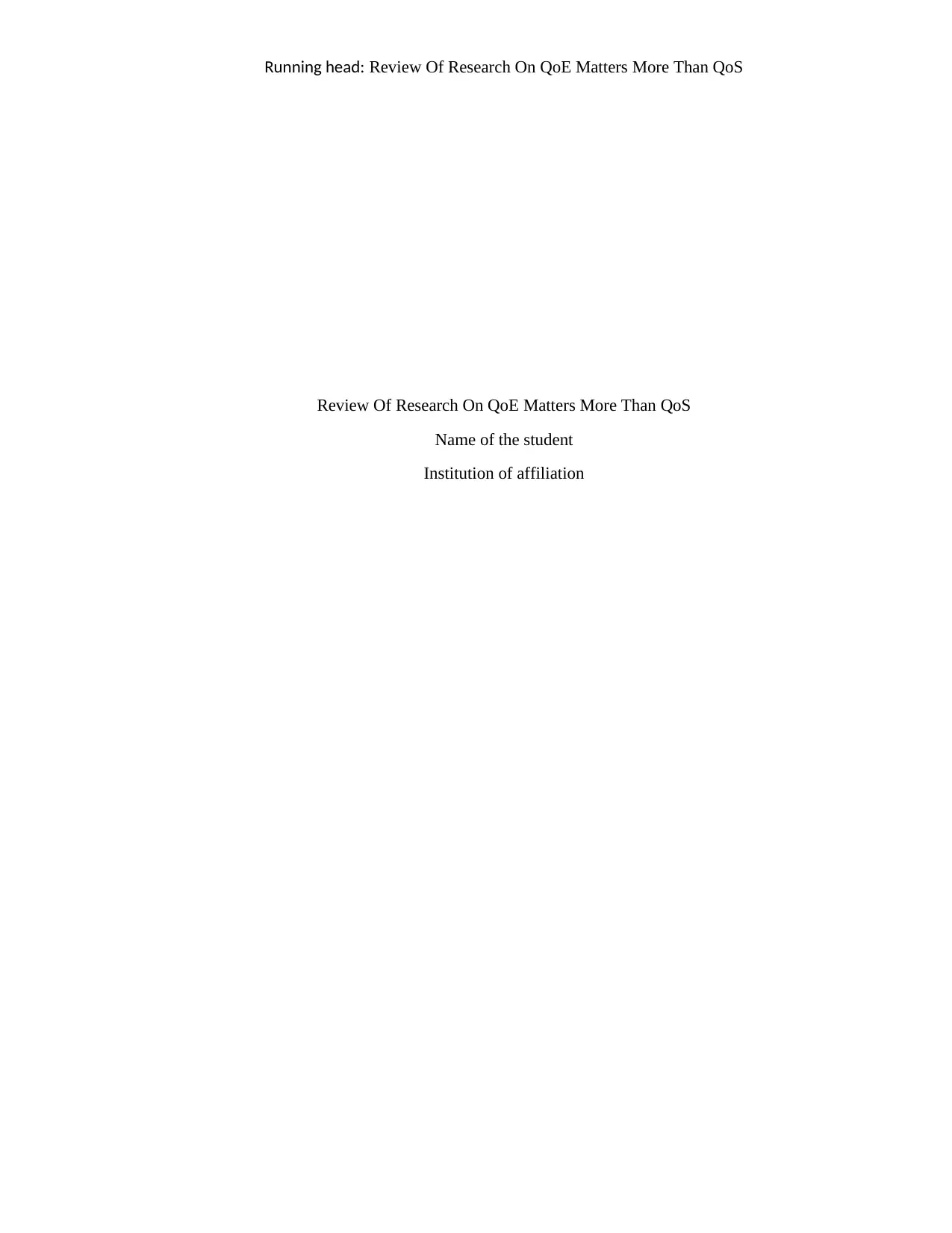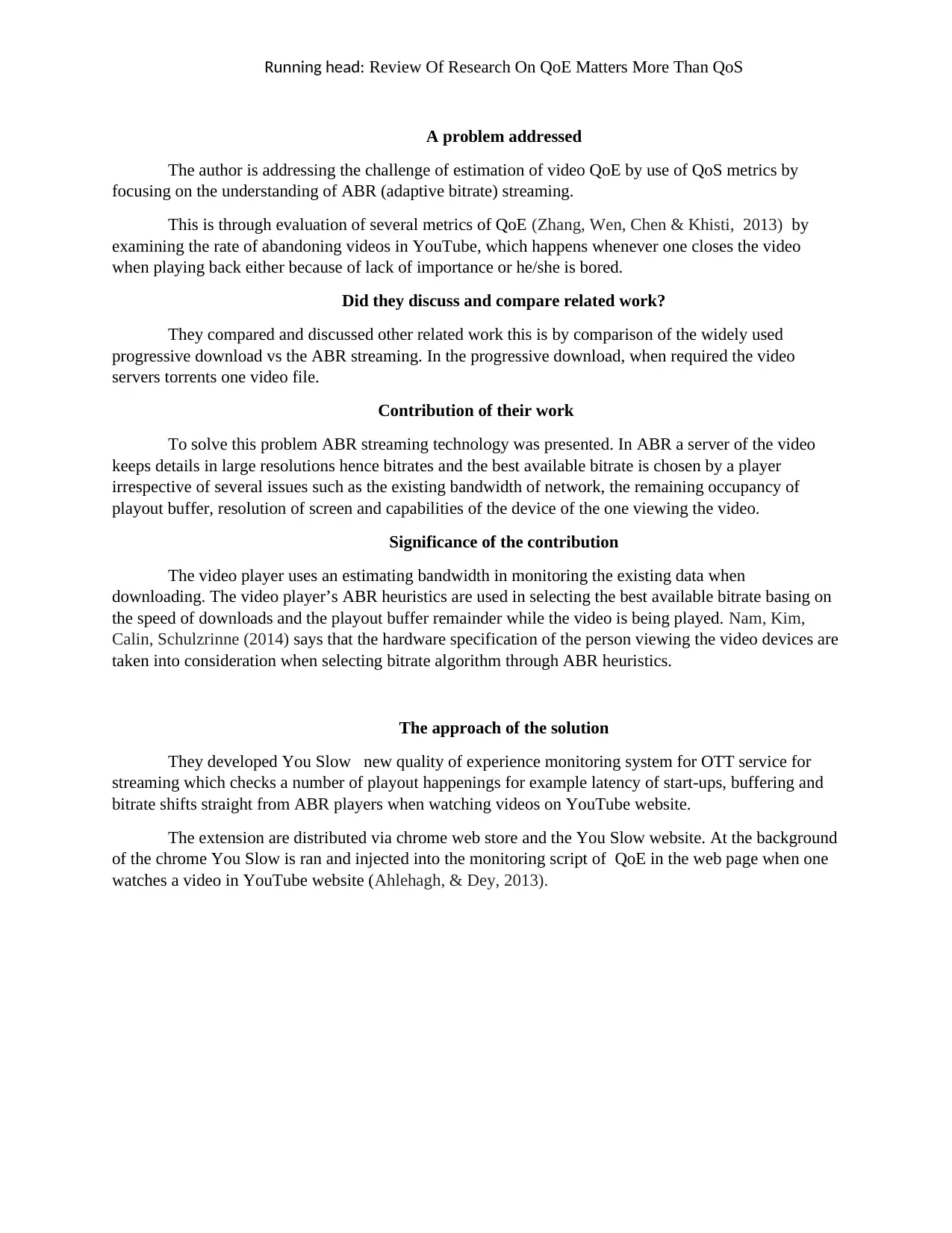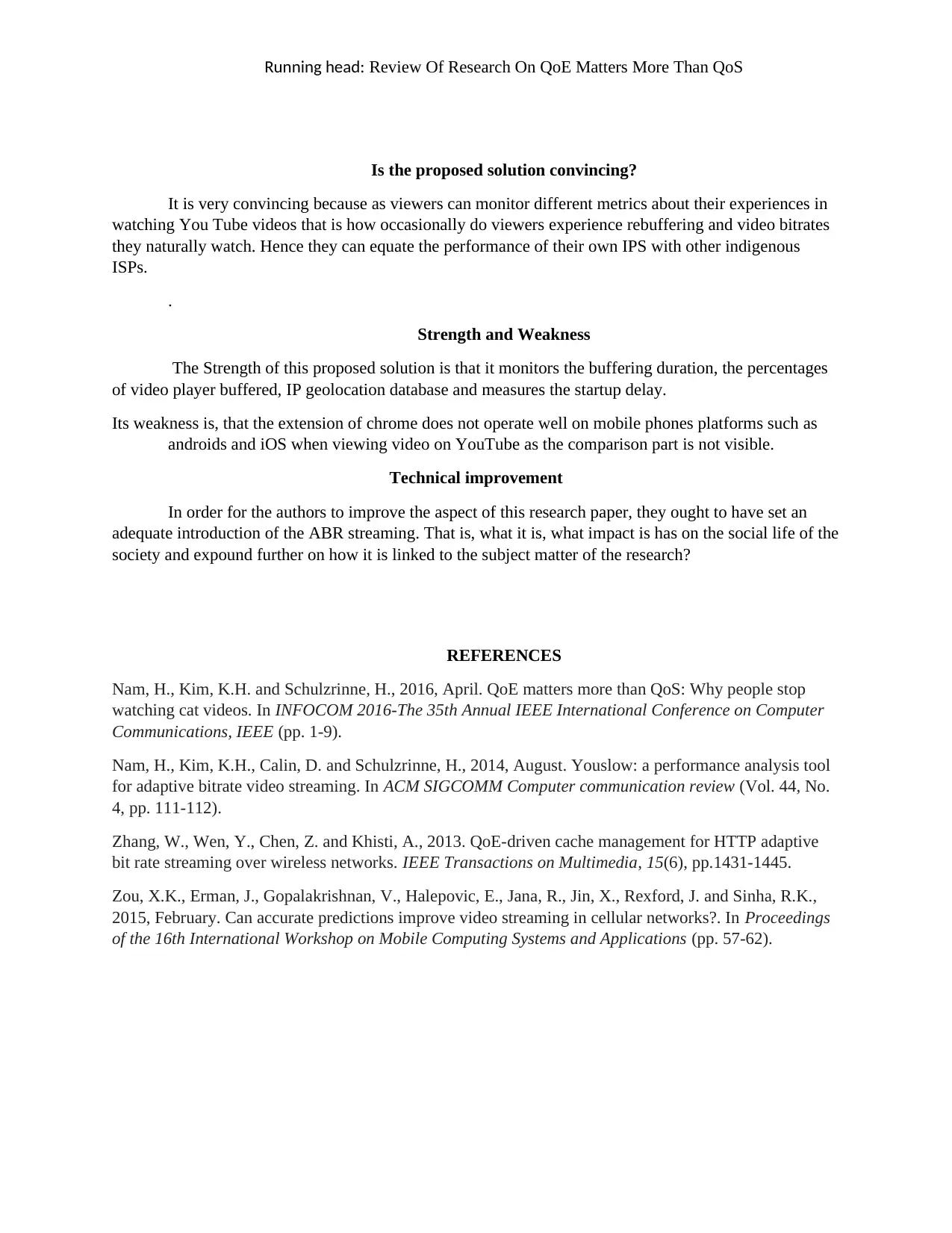Analysis: Review of Research on QoE Matters More Than QoS
VerifiedAdded on 2023/06/04
|3
|837
|313
Report
AI Summary
This report reviews research on the significance of Quality of Experience (QoE) over Quality of Service (QoS) in video streaming, specifically focusing on Adaptive Bitrate (ABR) streaming. The author addresses the challenge of estimating video QoE using QoS metrics, examining factors like video abandonment rates on YouTube. The report compares progressive download with ABR streaming, highlighting ABR's ability to select the best bitrate based on various factors, including network bandwidth and device capabilities. The YouSlow system is introduced as a tool to monitor QoE metrics such as startup latency and rebuffering, and the report evaluates the strengths and weaknesses of the proposed solution. The research emphasizes that rebufferings have a significantly greater impact on video abandonment than startup latency or bitrate changes. The report also suggests technical improvements to enhance the research.
1 out of 3




![[object Object]](/_next/static/media/star-bottom.7253800d.svg)